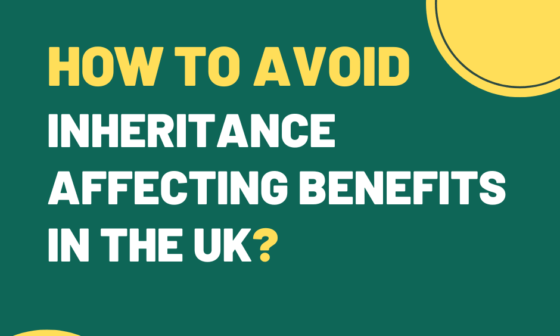
When it comes to clearing out a property a house or a flat, there are often many items that need to be disposed of.
The cost of disposing of these items can quickly add up, so it’s important to know how much your local council will charge for house clearance services.
What Is Council House Clearance?
Council house clearance is a service offered by local authorities to help residents dispose of unwanted items from their homes.
This service is particularly useful for those who are moving home, downsizing, or simply have a large amount of clutter to clear out.
The council will typically provide a team of professionals who will come to your property and remove any unwanted items, including furniture, appliances, and general waste.
How Much Do Councils Charge for House Clearance?
The cost of council house clearance can vary depending on a number of factors, such as the size of the property and the amount of waste that needs to be disposed of.
However, on average, you can expect to pay around £300- £500 for a standard house clearance.
This fee will typically include the cost of labour, transportation, and disposal fees.
Factors That Affect the Price of Council House Clearance
One of the main factors is the size of the property. A larger property will require more labour and transportation, which will inevitably increase the cost.
Additionally, the amount of waste that needs to be disposed of will also impact the price.
The more waste there is, the higher the disposal fees will be.
Another factor that can affect the price of council house clearance is the type of items that need to be disposed of.
Some items, such as electronic appliances, may require special disposal methods, which can add to the overall cost.
Finally, the location of the property can also affect the price. Councils in different areas may have different rates for their house clearance services, so it’s important to check with your local authority to get an accurate quote.
Is Council House Clearance Worth the Cost?
For many people, council house clearance is worth the cost. It provides a convenient and hassle-free way to dispose of unwanted items, without having to worry about the logistics of transporting and disposing of them yourself.
Additionally, using a professional house clearance service can help ensure that items are disposed of safely and responsibly.
Tips for Reducing the Cost of Council House Clearance
There are ways to reduce the cost of council house clearance without sacrificing quality. Here are some tips:
-
Sort through your belongings before the clearance team arrives: The more items you have, the longer the clearance will take, and the more expensive it will be.
-
Consider selling or donating items: If you have items that are in good condition, you may be able to sell them or donate them to charity.
This can reduce the amount of waste that needs to be cleared and may even earn you some extra cash.
-
Choose a local council service provider: If you choose a council house clearance provider that is based far away, you may end up paying extra for transportation costs.
-
Negotiate the price: Some council house clearance providers may be willing to negotiate the price, especially if you have a large amount of waste to be cleared.
Don’t be afraid to ask for a discount or to negotiate the price.
-
Consider DIY clearance: If you have the time and energy, you may be able to save money by doing some of the clearance work yourself.
For example, you can take smaller items to the local recycling centre or charity shop yourself, rather than paying the council to do it for you.
-
Choose a provider that offers a free quote: Before you commit to using a council house clearance provider, make sure that they offer a free quote.
This will allow you to compare prices and choose the provider that offers the best value for money.
- Be aware of any additional charges: Some council house clearance providers may charge extra for certain items, such as appliances or hazardous waste.
Make sure you are aware of any additional charges before you agree to use the service.
What Happens to Your Items After Council House Clearance?
Depending on the type of service you used and the condition of your items, they may be disposed of, recycled, or donated.
-
Disposal
Items that are no longer usable or recyclable may be taken to a landfill or incinerator for disposal. This is often the case for items that are heavily damaged or contaminated, such as old mattresses or hazardous waste.
However, many councils are committed to reducing waste and will try to dispose of items in an environmentally friendly manner.
-
Recycling
Many items that are removed during a council house clearance can be recycled. This includes items such as paper, cardboard, glass, and plastic.
These items are taken to a recycling centre, where they are sorted and processed before being turned into new products.
-
Donation
Items that are in good condition, such as furniture or clothing, may be donated to charity. This is a great way to ensure that your items are reused and benefit someone in need.
-
Reselling
In some cases, items that are in good condition and have value may be resold. This may happen if the council house clearance provider has a resale or auction service.
Items that are resold may include antiques, collectibles, or other high-value items.
the Different Types of Council House Clearance Services
1. Standard Council House Clearance Service
The standard council house clearance service is the most common type of clearance service offered by local councils in the UK.
This service is suitable for most types of properties, including residential and commercial properties.
The standard service typically involves the removal of general waste and bulky items such as furniture, appliances, and other household goods.
The council will usually provide a team of professionals who will carry out the clearance work, including loading the items onto a vehicle and disposing of them in an environmentally friendly manner.
2. Bereavement Clearance Service
The bereavement clearance service is a type of council house clearance service that is specifically designed to help families clear out the homes of their deceased loved ones.
This service is often offered free of charge or at a reduced cost, and it is designed to help families during a difficult time.
3.Hoarding Clearance Service
The hoarding clearance service is a specialised type of council house clearance service that is designed to help individuals who suffer from hoarding disorder.
Hoarding is a serious mental health condition that can result in the accumulation of large amounts of clutter and waste in a property.
4. Hazardous Waste Clearance Service
The hazardous waste clearance service is a type of council house clearance service that is designed to help individuals dispose of hazardous waste safely and legally.
Hazardous waste includes items such as chemicals, asbestos, and electronic waste, which can be harmful to the environment and human health if not disposed of properly.
To conclude
The cost of a standard house clearance can vary depending on the size of the property and the amount of waste that needs to be cleared.
On average, you can expect to pay around £300-£500 for a standard house clearance, which includes the cost of labour, transportation, and disposal fees.
It’s important to get a clear quote from your council or a professional house clearance service before proceeding with any work to avoid unexpected charges.


